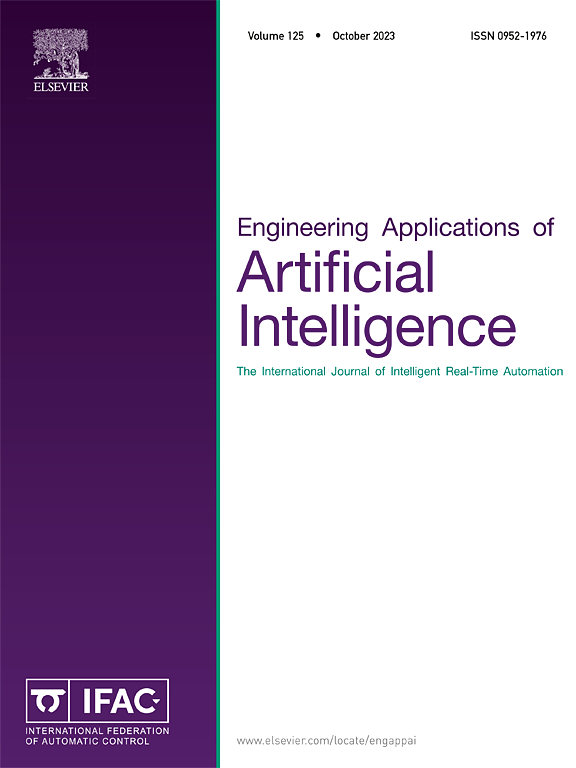基于区块链的医疗保健供应链管理:基于改进的零和犹豫模糊博弈论的障碍和解决方案识别和分析
IF 8
2区 计算机科学
Q1 AUTOMATION & CONTROL SYSTEMS
Engineering Applications of Artificial Intelligence
Pub Date : 2025-05-04
DOI:10.1016/j.engappai.2025.110991
引用次数: 0
摘要
区块链技术已成为医疗保健领域的一种变革性方法,可提高医疗保健供应链管理(HSCM)的效率、透明度和安全性。它解决了数据隐私、可追溯性和减少欺诈等关键问题,提供了一个安全可靠的平台。然而,必须克服实施过程中的重大障碍,以确保有效的医疗保健供应链运营。本研究提出了一种两阶段决策模型,用于不确定条件下HSCM的障碍识别和区块链采用方案的优化。第一阶段采用犹豫模糊最佳-最差法(HFBWM)对障碍进行优先排序。与层次分析法(AHP)等传统方法相比,HFBWM以较少的两两比较实现了较高的准确率。第二阶段,基于犹豫模糊集(hfs)下加权和算子(WSO)的改进零和犹豫模糊博弈论(IZSHFG)模型,确定区块链在HSCM中应用的最优策略组合。将挑战建模为一个参与者,将解决方案建模为另一个参与者,并在HFS下使用WSO建立决策矩阵。结果表明,最坏的情况包括四个关键障碍同时发生:“HSCM缺乏足够的区块链知识”(0.011217),“缺乏熟练的技术人员”(0.025457),“高维护和支持成本”(0.056076)和“患者数据安全风险”(0.069367)。这些发现强调需要有针对性的策略来解决这些障碍,确保b区块链成功融入HSCM。本文章由计算机程序翻译,如有差异,请以英文原文为准。
Blockchain-enabled healthcare supply chain management: Identification and analysis of barriers and solutions based on improved zero-sum hesitant fuzzy game theory
Blockchain technology has emerged as a transformative approach in the health sector, enhancing efficiency, transparency, and security in Healthcare Supply Chain Management (HSCM). It addresses critical issues such as data privacy, traceability, and fraud reduction, providing a secure and reliable platform. However, significant barriers to its implementation must be overcome to ensure effective healthcare supply chain operations. This study proposes a two-stage decision-making model for identifying barriers and optimizing blockchain adoption solutions in HSCM under uncertainty. The first stage employs the Hesitant Fuzzy Best-Worst Method (HFBWM) to prioritize barriers. Compared to traditional methods such as Analytic Hierarchy Process (AHP), HFBWM achieves high accuracy with fewer pairwise comparisons. In the second stage, the Improved Zero-Sum Hesitant Fuzzy Game Theory (IZSHFG) model, based on the Weighted Sum Operator (WSO) under Hesitant Fuzzy Sets (HFSs), determines the optimal combination of strategies for blockchain application in HSCM. The challenges are modeled as one player and the solutions as another, with the decision matrix established using WSO under HFS. The obtained results indicate the worst-case scenario involves the simultaneous occurrence of four critical barriers: “Lack of Sufficient Knowledge about Blockchain in HSCM” (0.011217), “Lack of Access to Skilled Technical Personnel” (0.025457), “High Maintenance and Support Costs” (0.056076), and “Security Risks of Patients' Data” (0.069367). These findings highlight the need for targeted strategies to address these barriers, ensuring blockchain's successful integration into HSCM.
求助全文
通过发布文献求助,成功后即可免费获取论文全文。
去求助
来源期刊

Engineering Applications of Artificial Intelligence
工程技术-工程:电子与电气
CiteScore
9.60
自引率
10.00%
发文量
505
审稿时长
68 days
期刊介绍:
Artificial Intelligence (AI) is pivotal in driving the fourth industrial revolution, witnessing remarkable advancements across various machine learning methodologies. AI techniques have become indispensable tools for practicing engineers, enabling them to tackle previously insurmountable challenges. Engineering Applications of Artificial Intelligence serves as a global platform for the swift dissemination of research elucidating the practical application of AI methods across all engineering disciplines. Submitted papers are expected to present novel aspects of AI utilized in real-world engineering applications, validated using publicly available datasets to ensure the replicability of research outcomes. Join us in exploring the transformative potential of AI in engineering.
 求助内容:
求助内容: 应助结果提醒方式:
应助结果提醒方式:


